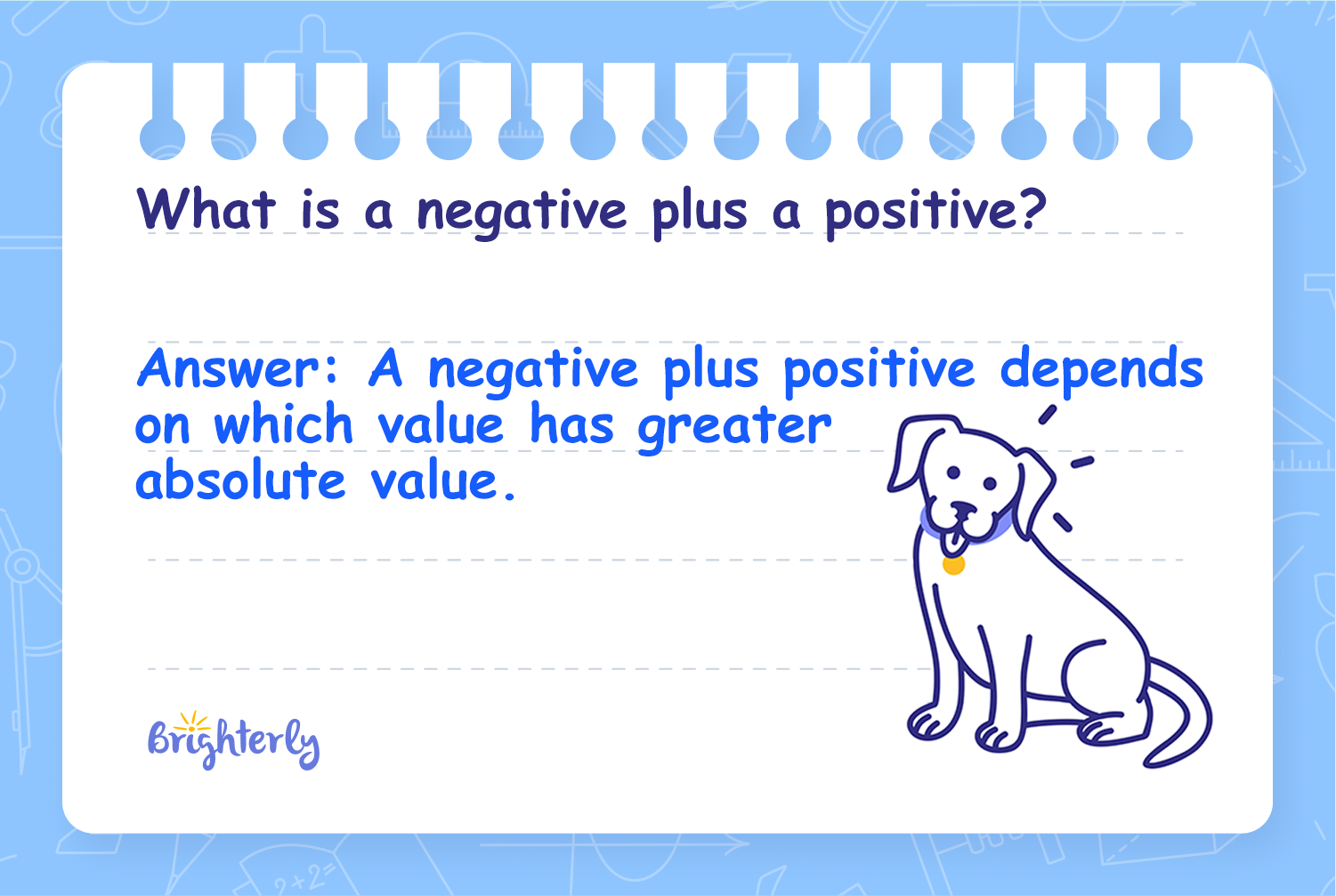
Reviewed by Laila A. Lico
What is a negative plus a positive?
Answer: A negative plus a positive depends on which value has a greater absolute value
Adding a negative number and a positive number is a common operation in arithmetic and algebra. The sum depends on the magnitudes (absolute values) of the numbers. If the positive number is greater than the absolute value of the negative, the result will be positive; if the negative is greater, the result will be negative. If they are equal, the result is zero.
Methods
Math Tutor Explanation Using the Number Line Method
Using a number line can help visualize how adding a negative and a positive number works and determine where the result will land based on their sizes.
Step 1: Step 1: Place the negative number on the number line
Step 2: Step 2: Move right by the value of the positive number
Math Tutor Explanation Using Absolute Values
Comparing the absolute values of the negative and positive numbers helps establish the sign and size of the sum.
Step 1: Step 1: Compare the absolute values of both numbers
Step 2: Step 2: Subtract the smaller absolute value from the larger
Step 1:
Step 2:
Math Tutor suggests: Mastering Addition with Positive and Negative Numbers
Deepen your understanding of adding and working with positive and negative numbers through these related practice questions.
FAQ on Adding Positive and Negative Numbers
What happens if the positive and negative numbers are equal in magnitude?
The result is zero because they cancel each other out.
Does the order matter when adding a negative and a positive number?
No, addition is commutative, so the order does not change the sum.
How do you subtract a negative number?
Subtracting a negative is the same as adding its positive value.
What is an example of a negative plus a positive resulting in a negative?
For instance, -10 + 3 equals -7, which is still negative.
How can I check my work when adding integers?
Using a number line or drawing a diagram helps verify your answer.


